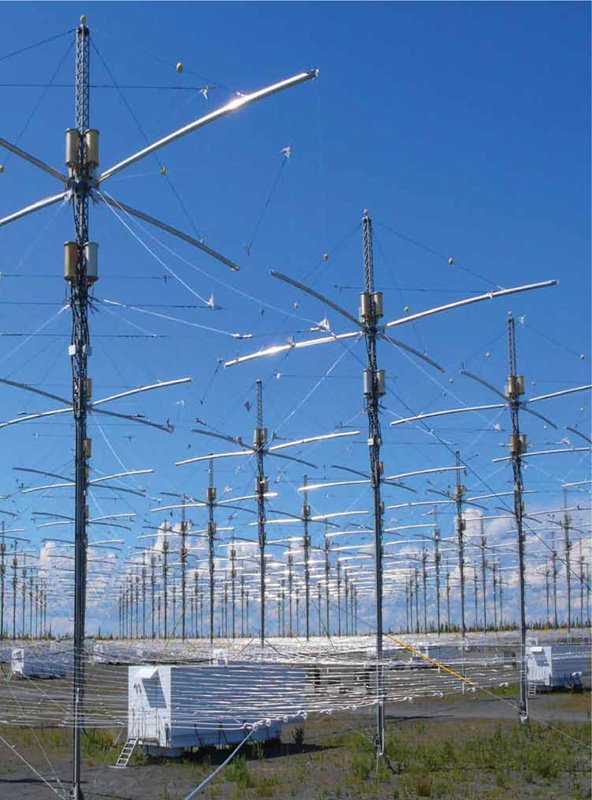
LOCATION Gakona, Alaska, USA
NEAREST POPULATION HUB Anchorage, Alaska
SECRECY OVERVIEW Access restricted: an atmospheric research facility under the jurisdiction of the US Department of Defense.
The High-frequency Active Auroral Research Program (HAARP) describes itself as “a premier facility for the study of ionospheric physics and radio science.” Its stated aim is to “further advance our knowledge of the physical and electrical properties of the Earth’s ionosphere which can affect our military and civilian communication and navigation systems.”
HAARP is funded by the US Air Force and Navy, as well as DARPA to conduct research into the ionosphere—the part of the atmosphere between 55 and 800 kilometers (35–500 miles) above the Earth’s surface. In this region, electrically charged gases can absorb, distort and reflect radio waves, with significant implications for military and civilian communications, navigation, surveillance and detection systems.
Depending on the Sun’s activity at any given time, the Alaskan ionosphere can be characterized as mid-latitude, auroral or polar—thereby offering varying conditions to study. The Gakona region is also well served by transport links but far away from any built-up areas where electric lights and noise could interfere with experiments. The HAARP project began in 1990, and its main phase of construction ended in 2007.
HAARP’s most important element is the Ionospheric Research Instrument (ISRI), a high-power, high-frequency radio transmitter that generates radio signals in the 2.8 to 10 MHz frequency range. The ISRI antenna consists of 180 towers, each 22 meters (72 ft) high and arranged in a large rectangular grid. Some of its signal is absorbed by the ionosphere (the rest bounces back to Earth or carries on up into space), and its effects on the relevant area of the ionosphere are then recorded and analyzed.
Though not a classified project (HAARP invites collaboration with universities throughout North America), entry to the site is restricted to “those having a need to conduct business at the facility.” With its military funding and focus on the distant sky, HAARP has inspired numerous accusations of dark intentions. It has been variously accused of developing an anti-aircraft system through manipulation of the atmosphere, modifying the weather to cause climatic events, tsunamis and earthquakes, and even developing mind-control technology. Its reputation among conspiracy theorists is no doubt aggravated by ISRI’s resemblance to a science-fiction death ray machine.